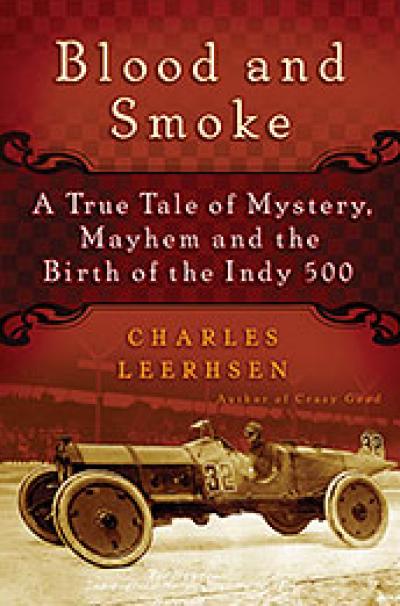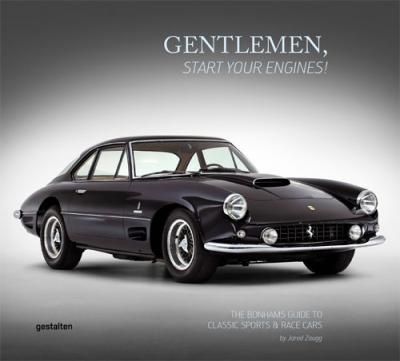
The annual Temporada (racing season) created a transition in Argentine motor sport. In earlier years racing circuits were primarily on rough tracks, with cars designed to cope with poor surfaces. Lacking the resources or technology needed to create bespoke circuits, Argentina looked to create racing venues from what it already had: public paved parks. After WWII, the Temporadas were organised in the Torreon in Mar del Plata, Parque Independencia in Rosario, Palermo, Constanera and Retiro in Buenos Aires, and Sarmiento in Cordoba. Thanks to these races, held in public parks and on public roads, Argentina began to be seen as a potential destination for a Formula 1 Grand Prix and for a round of the world sports car championship, the Beunos Aires 1000km. The circuits hosted the likes of Billoresi, Varzi, Farina, Wimille, Ascari, Moss and Prince Bira, and arguably taught Juan Manuel Fangio how to drive race cars. Wonderfully illustrated with 220 contemporary photographs, including many that have never been published before: images that will take you back in time, to the unique atmosphere of top motorsport in South America from 1950 to 1960.

In a nation that worships the automobile for the freedom, style, and status that it confers, the Indianapolis 500, run on or near Memorial Day eighty-seven times, is an annual rite of passage celebrating Americans’ love affair with speed. Indy recounts the drivers (677 men and 3 women) who have gone to Indianapolis in the past ninety-five years to live their dreams, staking their lives on the outcome. It highlights the faces in the crowd: hardworking Americans, tinhorn celebrities, hookers, movie stars, gate-crashers, and five American presidents. Terry Reed focuses his narrative on the track’s four quarter-mile-long turns, each the site of triumphs (including those of such multiple winners as Billy Vukovich, A. J. Foyt, and Helio Castroneves); grisly deaths (at least sixty-six, including three unrelated men of the same unusual last name who died in the same turn but in different decades); and bizarre heroics (like the sans souci French driver who downed champagne throughout the 1913 Indy 500 and still won). Reed also examines Indy’s confluence of racing and aeronautics (World War I flying ace Eddie Rickenbacker once owned the track) and the impact upon the event of such forces as segregation, gender politics, food, fads, publicity stunts, world-class partying, and tasteless pop culture. Indy takes readers on an entertaining, full-throttle ride through the history of one of the world’s most famous races and one of America’s most hallowed rituals. It is the definitive account of the crown jewel of American motor

“Forty cars lined up for the first Indianapolis 500. We are still waiting to find out who won.
The Indy 500 was created to showcase the controversial new sport of automobile racing, which was sweeping the country. Daring young men risked life and limb by driving automobiles at the astonishing speed of 75 miles per hour with no seat belts, hard helmets, or roll bars. When the Indianapolis Speedway opened in 1909, seven people were killed, some of them spectators. Oil-slicked surfaces, clouds of smoke, exploding tires, and flying grit all made driving extremely hazardous, especially with the open-cockpit, windshield-less vehicles. Most drivers rode with a mechanic, who pumped oil manually while watching out for cars attempting to pass, and drivers would sometimes throw wrenches or bolts at each other during the race. The night before an event the racers would take up a collection for the next day’s new widows.
Although the 1911 Indy 500 judges declared Ray Harroun the official winner, there is reason to doubt that result, since Speedway authorities ordered the records to be destroyed. But Blood and Smoke is about more than a race. It is the story of America at the dawn of the automobile age, a country in love with speed, danger, and spectacle.”

Porting heads is an art and science. It takes a craftsman’s touch to shape the surfaces of the head for the optimal flow characteristics and the best performance. Porting demands the right tools, skills, and application of knowledge. Few other engine builders have the same level of knowledge and skill porting engine heads as David Vizard. All the aspects of porting stock as well as aftermarket heads in aluminum and cast-iron constructions are covered. Vizard goes into great depth and detail on porting aftermarket heads. Starting with the basic techniques up to more advanced techniques, you are shown how to port iron and aluminum heads as well as benefits of hand and CNC porting. You are also shown how to build a high-quality flow bench at home so you can test your work and obtain professional results. Vizard shows how to optimize flow paths through the heads, past the valves, and into the combustion chamber. The book covers blending the bowls, a basic porting procedure, and also covers pocket porting, porting the intake runners, and many advanced procedures. These advanced procedures include unshrouding valves, porting a shortside turn from the floor of the port down toward the valve seat, and developing the ideal port area and angle. All of these changes combine to produce optimal flow velocity through the engine for maximum power.

Bonhams is the world’s go-to source for classic race and sports cars. In this book, the auction house presents a selection of the most breathtaking models and tells their stories. It might only take a slight turn of the ignition, but firing up classic cars also makes great moments in automobile history come to life. Every page of Gentlemen, Start Your Engines! gives the reader a sense of the intensity of true automobile culture. Large-format images showcase sleek shapes and tactile vintage interiors in loving detail. The book was compiled by Jared Zaugg, a man who founded one of the coolest high-end motorcycle events in the world, the Legend of the Motorcycle: International Concours d’Elegance. Although Zaugg has mostly been associated with two-wheelers, in Gentlemen, Start Your Engines! he revels in his second passion–double the number of wheels and double the fun! In cooperation with Bonhams, the largest auction house for classic cars, Jared Zaugg reveals the undeniable icons of the scene. The book features a selection of models that go far beyond mere technical stats and gleaming chrome. Rather, they all offer something far more valuable: unique stories. These include the legendary Hurst Baja that Steve McQueen drove in an off-road race through the desert outside Las Vegas in 1968 until its axle broke. Or the famous Bugatti Brescia Type 22 from 2915 that lay on the bottom of Lake Maggiore for over 70 years before its remains were recovered in 2009. Then there are classic beauties such as the Aston Martin DB4GT, as well as a collection of historical vehicles that call to mind the origin of the word “horsepower” and the automobile’s humble beginning as a noble carriage. All the big names are included, but the focus is on what can be found behind the logos and the polished surfaces. With its striking photographs and compelling texts, Gentlemen, Start Your Engines! truly captures the feeling of these unique cars. As lovers of exclusive limited series, record-making vehicles, and legendary races themselves, Jared Zaugg and the team at Bonhams went all out in their efforts to collect the best of the best in this publication–and it shows. Gentlemen, Start Your Engines! is a book that celebrates cars. While it will inspire some to dream and fuel envy in others, it offers superb stories for everyone.







